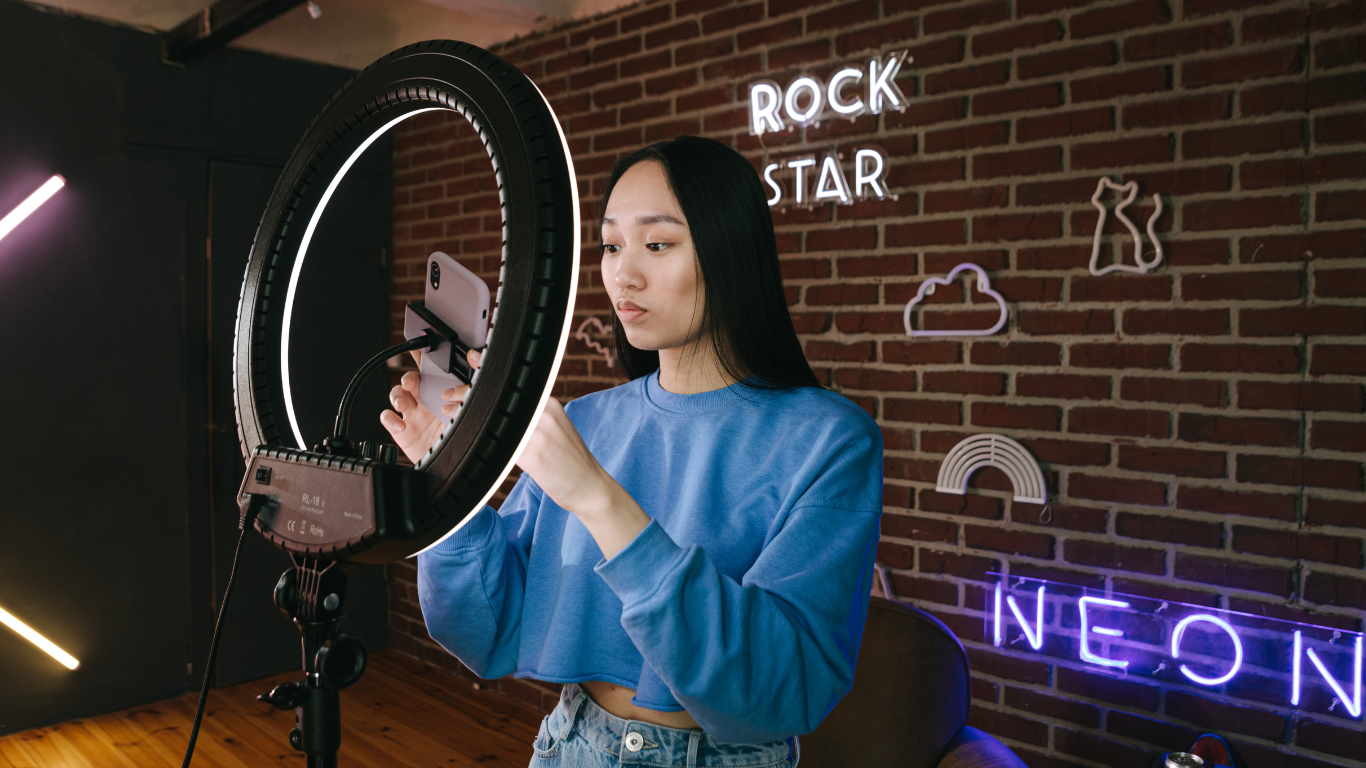In today’s fast-paced digital landscape, influencer marketing has become a pivotal strategy for brands aiming to connect with their audiences in a genuine and impactful manner. By collaborating with influencers—individuals who have built substantial and engaged followings on social media—brands can unlock new markets, build credibility, and enhance engagement. In this blog, we’ll delve into how you can effectively incorporate influencer marketing into your digital strategy, supported by real-world examples and compelling statistics that underscore its value.
1. Understand Your Audience and Define Clear Goals
Before embarking on an influencer marketing campaign, it’s essential to have a deep understanding of your target audience and establish clear objectives. Whether your goal is to increase brand awareness, boost sales, or launch a new product, these objectives will guide your influencer selection and campaign strategy.
Example: When Coca-Cola introduced its "Share a Coke" campaign, the primary goal was to foster a personal connection with consumers by featuring common names on Coke bottles. By partnering with influencers who encouraged their followers to find and share their personalized bottles, Coca-Cola successfully sparked widespread social media engagement, leading to a 2% sales increase in the U.S. and a significant boost in brand visibility.
Expansion Example: Similarly, Spotify’s "Wrapped" campaign taps into personalized content by allowing users to share their year-in-review playlists. By collaborating with influencers to amplify these personalized stories, Spotify saw a massive increase in user-generated content and a surge in app engagement at the end of each year.
2. Select the Right Influencers
Choosing the right influencers is critical to the success of your campaign. It’s not just about finding someone with a large following, but rather identifying influencers whose values align with your brand and who can authentically connect with your target audience.
Micro vs. Macro Influencers: Depending on your campaign goals and budget, you can opt for micro-influencers, who have smaller but highly engaged niche followings, or macro-influencers, who have larger, more diverse audiences. Micro-influencers often drive higher engagement rates, while macro-influencers provide broader reach.
Example: Daniel Wellington, a Swedish watch brand, strategically used micro-influencers to transform from a startup to a global success. By engaging influencers with smaller yet loyal audiences, the brand was able to generate authentic content, enhance brand recognition, and achieve substantial sales growth.
Expansion Example: Beauty brand Glossier also effectively leveraged micro-influencers—primarily everyday consumers and beauty enthusiasts—rather than celebrities. This strategy helped Glossier build a strong community around its products, leading to rapid growth and brand loyalty.
3. Create Authentic and Engaging Content
The power of influencer marketing lies in the authenticity of the content produced. Rather than imposing strict scripts, allow influencers the creative freedom to present your brand in a way that resonates with their audience. Authenticity not only builds trust but also drives higher engagement.
Example: Gymshark, a leading fitness apparel brand, collaborates with fitness influencers who integrate Gymshark products into their workout routines, share fitness tips, and post daily fitness content. This genuine approach has led to increased brand loyalty and impressive sales growth, with Gymshark achieving over £1 billion in sales by 2020.
Expansion Example: Dove’s "Real Beauty" campaign also benefited from authentic content. By partnering with influencers who shared personal stories about body positivity, Dove was able to strengthen its brand message and create a deep emotional connection with its audience, resulting in increased consumer trust and brand loyalty.
4. Utilize Multiple Social Media Platforms
Influencer marketing isn’t confined to one platform. To maximize your campaign’s reach, consider leveraging multiple social media platforms based on where your target audience is most active. Instagram, YouTube, TikTok, and even LinkedIn offer unique opportunities to engage different demographics.
Example: Fenty Beauty, Rihanna’s cosmetics brand, effectively utilized influencers across Instagram and YouTube to showcase its diverse product range. Influencers shared tutorials, reviews, and makeup looks, helping Fenty Beauty become a billion-dollar brand within its first year.
Expansion Example: Similarly, L’Oréal Paris has successfully tapped into TikTok’s massive user base by collaborating with beauty influencers to create trending makeup challenges. This multi-platform approach has enabled L’Oréal to reach a younger, trend-conscious audience, driving both brand awareness and sales.
5. Track and Measure Campaign Performance
To ensure that your influencer marketing efforts are yielding the desired results, it’s essential to track key performance indicators (KPIs) such as engagement rates, conversion rates, website traffic, and sales. These metrics will help you evaluate the success of your campaign and make data-driven decisions for future initiatives.
Example: HelloFresh, a meal kit delivery service, meticulously tracks the performance of its influencer partnerships by monitoring referral codes and affiliate links. This data-driven approach allows HelloFresh to accurately measure the impact of influencer campaigns on customer acquisition and sales, leading to a strong return on investment.
Expansion Example: Nike also leverages detailed performance tracking to optimize its influencer campaigns. By analyzing engagement metrics and sales data from influencer-generated content, Nike continuously refines its strategy, ensuring that each campaign effectively resonates with its target audience.
6. Foster Long-Term Influencer Relationships
While one-off collaborations can be beneficial, building long-term relationships with influencers can lead to even greater rewards. Long-term partnerships enable influencers to develop a deeper understanding of your brand, resulting in more authentic and consistent promotion.
Example: Adidas has cultivated enduring relationships with high-profile influencers like Kanye West and Beyoncé, resulting in highly successful product lines such as Yeezy and Ivy Park. These partnerships have not only enhanced Adidas’s brand image but also driven significant sales, with the Yeezy brand alone valued at over $1.7 billion.
Expansion Example: Luxury fashion brand Louis Vuitton has also embraced long-term influencer partnerships, notably with actress Emma Stone. These ongoing collaborations help reinforce the brand’s luxury image and maintain a consistent presence in the highly competitive fashion industry.
7. Ensure Compliance with Regulatory Guidelines
Compliance with relevant regulations, such as disclosure guidelines, is crucial in influencer marketing. In the U.S., the Federal Trade Commission (FTC) requires influencers to clearly disclose their relationships with brands when promoting products or services. Transparent promotion not only builds consumer trust but also protects your brand from potential legal issues.
Example: In 2020, the FTC imposed penalties on a company for failing to disclose that its influencers were paid to promote its products. This case underscores the importance of transparency and compliance in influencer marketing.
Expansion Example: To avoid similar issues, major brands like P&G and Unilever have implemented strict compliance protocols, ensuring that all influencer partnerships include clear disclosures. This proactive approach not only mitigates legal risks but also reinforces the authenticity of their campaigns.
Conclusion
Influencer marketing has proven to be a highly effective way for brands to reach new audiences, build credibility, and drive engagement. By thoroughly understanding your audience, selecting the right influencers, fostering authentic content, leveraging multiple platforms, tracking performance, building long-term relationships, and adhering to regulatory guidelines, you can seamlessly integrate influencer marketing into your digital strategy.
As the digital landscape continues to evolve, influencer marketing will remain a cornerstone of successful brand strategies. Start planning your influencer campaigns today, and watch your brand grow through genuine connections and impactful collaborations.

A.H Brands
.png?width=500&height=200&name=Its%20Pet%20Cancer%20Awareness%20Month%2c%20and%20were%20committed%20to%20educating%20people%20about%20pet%20cancer%20and%20available%20resources.%20Innovative%20treatments%20now%20harness%20pets%20own%20immune%20systems%20to%20treat%20and%20manage%20va%20(13).png)



















